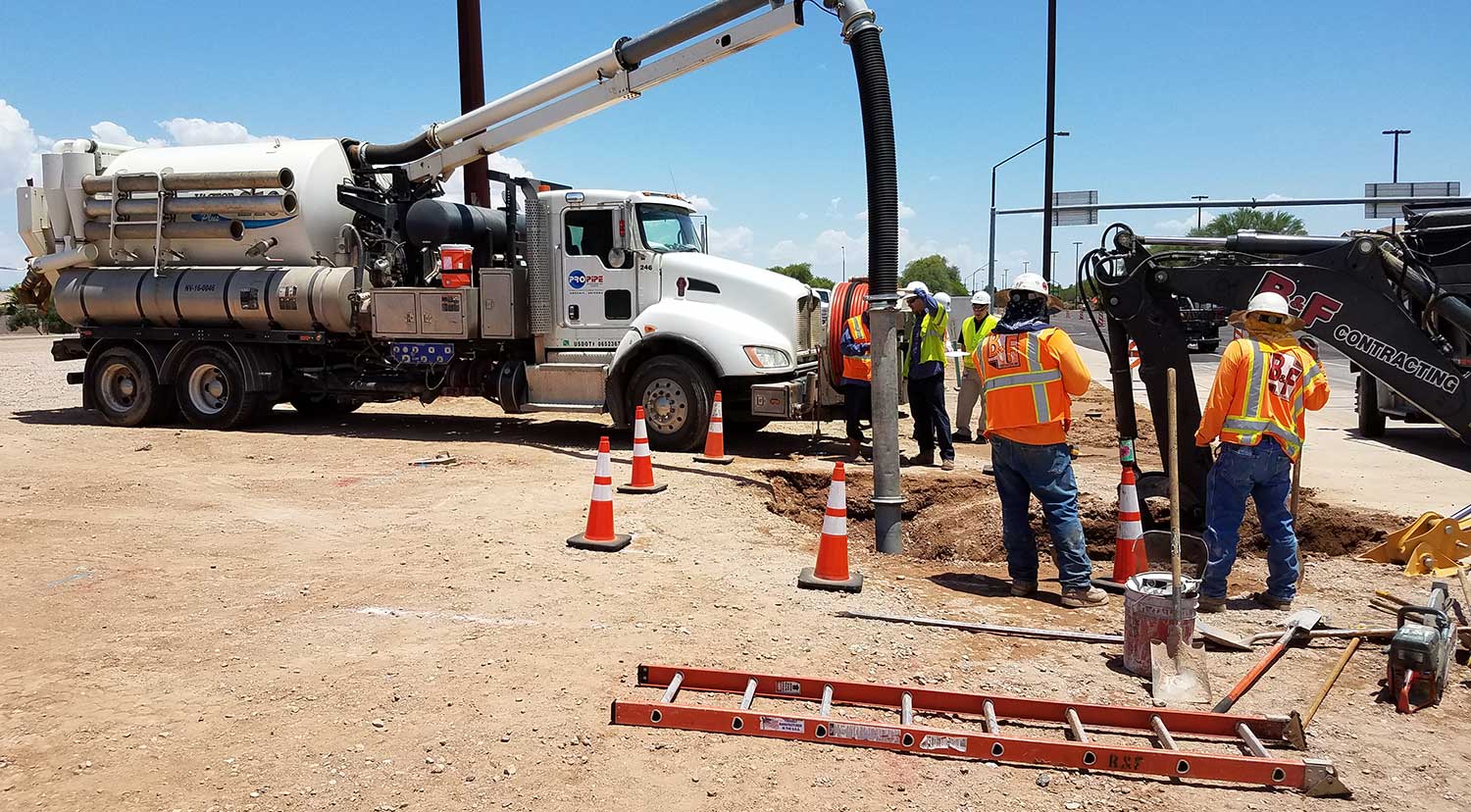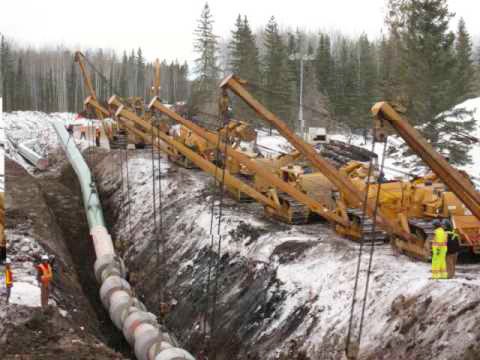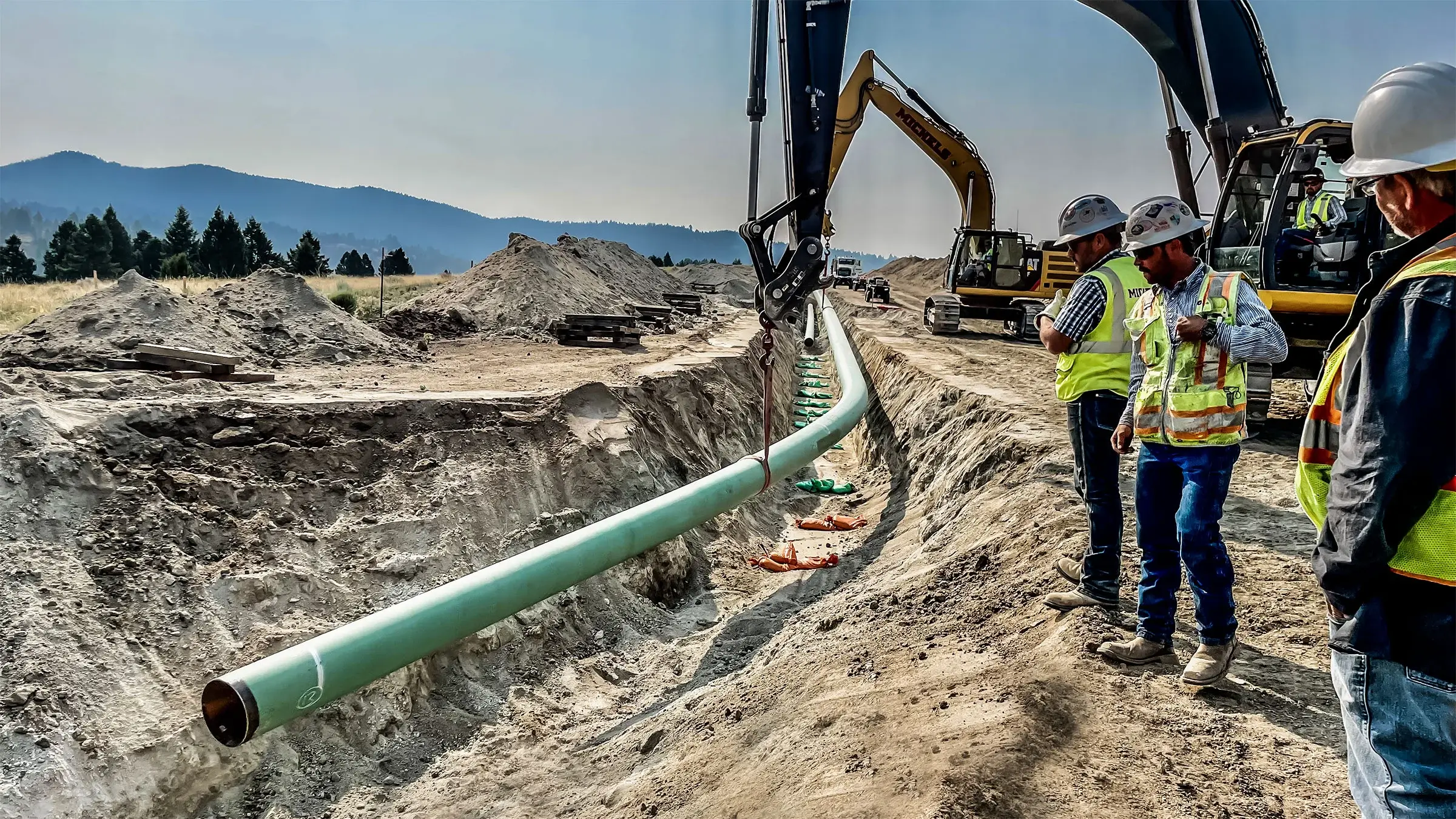Exploring the most recent Developments in Pipeline Construction Solutions for Modern Projects
The Pipeline Construction sector is going through considerable adjustments. Developments such as wise products and robotics are improving traditional methods. These innovations guarantee to boost effectiveness and security. Furthermore, AI modern technologies are improving job management capacities. As these components assemble, they question regarding their long-lasting impact on sustainability and price. Recognizing these technologies is essential for stakeholders aiming to navigate this evolving landscape. What ramifications do they hold for future jobs?
The Surge of Smart Products in Pipeline Construction
As the need for extra effective and sustainable Pipeline systems boosts, the integration of clever materials has actually become a transformative remedy in Pipeline Construction. These sophisticated products possess distinct buildings that enhance the efficiency and long life of pipes. Self-healing polymers can instantly repair minor leakages, considerably minimizing maintenance expenses and downtime. In addition, products embedded with sensors can keep track of architectural honesty and environmental problems, enabling real-time data collection and analysis.
Moreover, smart products are commonly lightweight and corrosion-resistant, which not just simplifies installation but likewise extends the life-span of the systems. Their flexibility enables pipelines to withstand extreme ecological conditions, promoting safety and security and integrity. As industries significantly prioritize sustainability, the use of green clever products adds to lowered environmental effect. Generally, the increase of smart materials marks a noteworthy shift in Pipeline Construction, leading the way for cutting-edge remedies to fulfill contemporary infrastructure needs.
Improvements in Robotics for Installation and Maintenance
The integration of clever products in Pipeline Construction is complemented by improvements in robotics, which are reinventing setup and maintenance processes. Robotic technologies, such as automated welding systems and drones, enhance performance and precision, minimizing human error and minimizing safety and security risks. These robots can run in tough atmospheres, making certain that installations are performed in harmful or remote locations without placing employees at risk.
Robot evaluation devices equipped with innovative sensors provide real-time data on Pipeline stability, enabling for proactive maintenance. They can detect leakages or architectural weaknesses, making it possible for timely interventions that prolong the lifespan of Pipeline systems. Using robotics not only speeds up the Construction timeline yet also enhances source allowance, bring about set you back savings. As these technologies continue to evolve, they are readied to play a vital duty in forming the future of Pipeline Construction, making certain reliability and sustainability in facilities growth.
AI-Driven Project Administration Equipment Changing Operations
AI-driven job administration devices are improving workflows in Pipeline Construction by enhancing decision-making processes through enhanced accessibility to real-time information analytics. These devices enable teams to respond quickly to task advancements, thereby increasing efficiency. Structured interaction networks foster cooperation among stakeholders, additionally maximizing task end results.
Improved Decision-Making Procedures

Real-Time Information Analytics
Using real-time information analytics, modern-day task administration tools change operations in Pipeline Construction. These innovative devices utilize man-made intelligence to provide instant insights right into project efficiency, source allowance, and possible threats. By continually monitoring key efficiency indications, groups can promptly adapt to changing conditions, optimizing labor and materials use. The combination of real-time data enables for more informed decision-making, lowering delays and reducing expenses. Additionally, anticipating analytics can determine trends and forecast challenges prior to they escalate, boosting overall task effectiveness. Because of this, Pipeline Construction companies that adopt these AI-driven devices can enhance task timelines and results, ensuring they remain affordable in a significantly complicated sector landscape. This advancement marks a substantial shift towards data-centric monitoring methods.
Structured Interaction Channels
Effective interaction is critical in Pipeline Construction, where countless stakeholders need to team up perfectly to assure job success. The intro of AI-driven project management tools has actually transformed interaction networks within the industry. These devices assist in real-time info sharing, allowing teams to accessibility updates, share documents, and track development effectively. By automating routine jobs and providing a centralized platform for interaction, these innovations get rid of misconceptions and reduce hold-ups. Boosted visibility right into task timelines and resource appropriation fosters responsibility amongst staff member. In addition, AI analytics can identify potential communication spaces, guaranteeing positive analytical. Inevitably, structured interaction networks not just boost operations however additionally boost total job efficiency, enabling Pipeline Construction firms to meet contemporary needs effectively.
Enhanced Security Procedures With Modern Technology Integration
The integration of technology in Pipeline Construction has caused improved security procedures. Real-time tracking systems, wearable security gadgets, and automated danger evaluations are now important elements in lessening dangers on task sites. These advancements not just enhance worker safety yet also streamline conformity with sector guidelines.
Real-Time Surveillance Solutions
How can real-time monitoring systems change Pipeline Construction safety protocols? By incorporating innovative innovation, these systems offer constant monitoring of Construction activities, ensuring prompt detection of prospective hazards. Sensing units and cams can keep an eye on environmental conditions, devices efficiency, and workforce movements, supplying important information in genuine time. This aggressive technique allows job supervisors to determine risks prior to they escalate, significantly improving security actions on-site. In enhancement, real-time monitoring promotes compliance with governing needs, guaranteeing that safety requirements are satisfied regularly. The capacity to analyze information instantaneously sustains educated decision-making, making it possible for timely interventions. As a result, Pipeline Construction jobs can run much more successfully while protecting the well-being of workers and decreasing accidents, consequently transforming the sector's security landscape.
Wearable Security Instruments
Regularly, wearable security gadgets are being incorporated into Pipeline Construction to enhance safety procedures. These cutting-edge tools, including wise helmets, vests, and wristbands, are developed to check employee health and environmental problems in real-time. Outfitted with sensing units, these devices can discover hazards such as harmful gas direct exposure, extreme warm, or high sound levels, offering immediate informs to managers and employees. In addition, wearable innovation usually consists of general practitioner monitoring features, permitting reliable place tracking of workers on-site. This capacity not just help in fast action throughout emergency situations but additionally boosts total task management. By focusing on employee security with modern technology assimilation, Pipeline Construction firms are making considerable strides in minimizing crashes and promoting a society of safety within the market.

Automated Risk Evaluations
While typical risk evaluations often depend on hand-operated evaluations, the combination of computerized risk evaluation innovations is transforming safety and security protocols in Pipeline Construction. These sophisticated systems take advantage of information analytics, synthetic knowledge, and machine knowing to determine prospective risks much more precisely and effectively. By continually checking environmental conditions, devices condition, and worker habits, automated analyses offer real-time understandings that improve decision-making. This proactive method decreases the probability of mishaps and improves conformity with security policies. Additionally, automated danger analyses can be upgraded instantly, making sure that all stakeholders have accessibility to the most recent details. Because of this, Pipeline Construction jobs take advantage of a more secure workplace, reducing disruptions and fostering a culture of safety through modern technology assimilation.
Sustainable Practices in Pipeline Construction
As the need for power infrastructure climbs, the Pipeline Construction sector significantly prioritizes lasting methods that minimize ecological influence. Business are adopting environmentally friendly products and sophisticated Construction methods to lower their carbon footprint. The usage of trenchless technology enables for Pipeline installment with minimal disturbance to the surrounding atmosphere, protecting all-natural habitats and minimizing dirt disintegration.
Furthermore, the execution of renewable resource resources, such as solar or wind, to power Construction tasks is acquiring traction. This change not just lowers dependence on fossil fuels however additionally enhances the overall sustainability of Pipeline projects. In addition, effective waste management methods, view including recycling and reusing materials, are coming to be criterion in the market.
Real-Time Tracking and Predictive Maintenance Solutions
The shift towards sustainable methods in Pipeline Construction has led the way for the integration of real-time monitoring and predictive maintenance solutions. These technologies leverage advanced sensors and information analytics to continuously evaluate Pipeline integrity and operational performance. By gathering data in real time, operators can spot abnormalities such as leaks or stress declines before they escalate into severe problems. This proactive technique not only reduces environmental risks yet likewise decreases downtime and upkeep expenses.
Predictive upkeep utilizes algorithms to forecast prospective failures based on historic data and present performance metrics. This enables prompt interventions, maximizing upkeep timetables and resource allocation. Overall, real-time tracking and anticipating maintenance remedies represent a significant advancement in Pipeline Construction, boosting security and reliability while sustaining sustainability goals. As markets proceed to embrace these technologies, the operational landscape of Pipeline monitoring is readied to evolve significantly, making certain long-lasting stability and effectiveness.
The Function of Drones in Evaluating and Assessment
Drones have arised as transformative tools in the evaluating and evaluation of pipes, offering boosted efficiency and precision. Their capacity to capture high-resolution pictures and video clips from numerous angles enables for thorough evaluations of Pipeline honesty without running the risk of human security. Outfitted with advanced sensors and thermal imaging capacities, drones can detect leaks, deterioration, and architectural anomalies that may not be noticeable to the nude eye.
Furthermore, the implementation of drones substantially reduces evaluation time, making it possible for quicker decision-making for upkeep and fixings. This effectiveness translates to set you back financial savings and marginal disturbance to bordering atmospheres. Drones can additionally access hard-to-reach locations, such as rugged terrains or raised frameworks, further increasing the range of inspections.
As the Pipeline sector remains to embrace technological innovations, the combination of drones into evaluating and inspection processes is expected to expand, establishing brand-new standards for operational excellence and safety and security in Pipeline Construction solutions.
Often Asked Concerns
What Are the Expenses Related To Modern Pipeline Construction Innovations?
The costs linked with modern-day Pipeline Construction developments typically include advanced products, specialized labor, and sophisticated technology. These factors add to greater initial financial investment, but can result in lasting cost savings through boosted effectiveness and decreased maintenance demands.
Exactly How Do Regulatory Adjustments Influence Pipeline Construction Technologies?
Regulative changes substantially influence Pipeline Construction innovations by necessitating the fostering of safer, extra effective approaches. Conformity requirements usually drive advancement, leading to innovations in products, layout, and Construction methods that boost overall job sustainability and safety and security.
What Skills Are Required for Careers in Advanced Pipeline Construction?

Careers in sophisticated Pipeline Construction call for competence in design principles, job monitoring, safety procedures, and ecological guidelines. In addition, skills in innovation assimilation, synergy, and problem-solving are vital for going across the complexities of modern facilities jobs.
Exactly How Can Firms Ensure Compliance With Environmental Criteria?
To ensure conformity with ecological criteria, business must carry out extensive training programs, perform routine audits, and embrace finest methods in sustainability. Involving with stakeholders and keeping an eye on regulative modifications additionally reinforces their commitment to ecological stewardship.

What Are the Key Obstacles Dealing With Pipeline Construction Today?
The key difficulties encountering Pipeline Construction today include governing compliance, environmental worries, varying product expenses, labor scarcities, and the requirement for innovative technology combination (Pipeline Construction Services). These factors complicate job timelines and total efficiency in the market
As the demand for extra lasting and reliable Pipeline systems raises, the combination of clever products has actually arised as a transformative solution in Pipeline Construction. AI-driven task management tools are reshaping process in Pipeline Construction by boosting decision-making procedures via improved access to real-time data analytics. While job administration in Pipeline Construction has actually traditionally relied on hands-on processes, the combination of advanced devices substantially boosts decision-making capabilities. Harnessing real-time information analytics, modern project management tools revolutionize workflow More about the author in Pipeline Construction. Jobs in original site advanced Pipeline Construction require competence in design concepts, project administration, security procedures, and environmental policies.